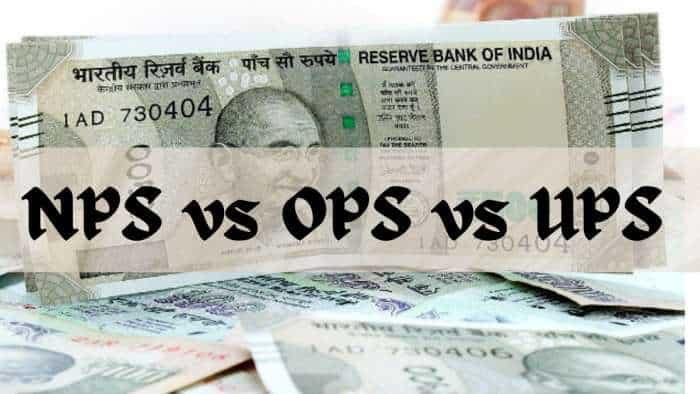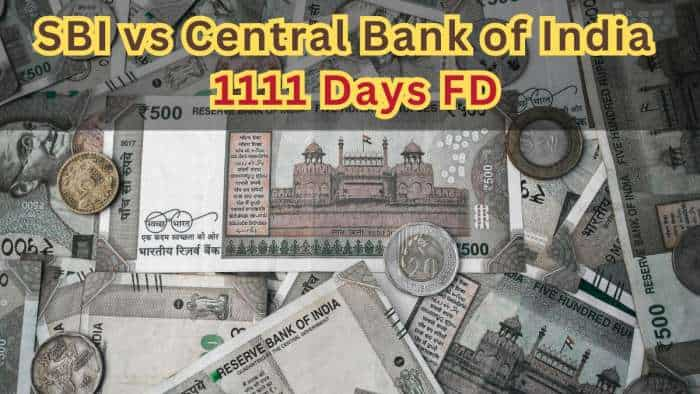Troubled by huge credit card bills? How to avoid being a defaulter
Credit Card Bill: Credit cards have become a necessity for many people these days. However, every purchase made on a credit card is essentially a loan that must be repaid within the grace period. If you repay the amount within this period, no interest is charged. But if you miss the deadline, steep interest charges apply. If you are one of them and struggling with a large credit card bill, a balance transfer might be a helpful solution. Know how:
)
Credit Card Bill: Credit cards have become a necessity for many people these days. Even if you don’t have cash on hand, you can easily shop with a credit card, often enjoying better discounts in the process. However, every purchase made on a credit card is essentially a loan that must be repaid within the grace period. If you repay the amount within this period, no interest is charged. But if you miss the deadline, steep interest charges apply.
This is where the risk of a debt trap begins. If you are one of them and struggling with a large credit card bill, a balance transfer might be a helpful solution. This method can prevent you from falling deeper into debt—but it requires you to have more than one credit card. Let's explain what a credit card balance transfer is, when it’s beneficial, and when it could pose a risk.
What is a Balance Transfer?
A balance transfer allows you to pay off your credit card bill by transferring the outstanding balance to another credit card. To do this, the second card must have a sufficient credit limit, as you can only transfer up to 75% of the available limit. The bank facilitating the balance transfer typically charges a processing fee and GST for this service.
Benefits of a credit card Balance Transfer
The main benefit of a balance transfer is that it allows you to pay off the balance on one card using another card, giving you a fresh grace period to repay the debt. If you pay the amount within this new grace period, you won't incur any interest. This helps you avoid becoming a defaulter, protecting your credit score from being negatively impacted.
How to perform a Balance Transfer
There are two ways to initiate a balance transfer. The first method involves calling your bank's customer service to request the transfer. The second option is to use your bank’s app or website to transfer the balance yourself. You'll need details for both cards, and you can choose to repay the balance in a lump sum or through EMIs.
When a Balance Transfer could become a problem
Occasionally using a balance transfer isn’t an issue, but relying on this method frequently can negatively affect your credit score. Additionally, if you fail to repay the transferred balance within the new grace period, you risk falling into the debt trap again. This is because credit card interest rates are high and calculated on a compound interest basis, making it easy for the debt to grow quickly.
Get Latest Business News, Stock Market Updates and Videos; Check your tax outgo through Income Tax Calculator and save money through our Personal Finance coverage. Check Business Breaking News Live on Zee Business Twitter and Facebook. Subscribe on YouTube.
RECOMMENDED STORIES

Retirement Planning: How one-time investment of Rs 11,00,000 can create a Rs 3,30,00,000 retirement corpus

Monthly Pension Calculations: Is your basic pension Rs 25,000, Rs 45,000, or Rs 55,000? Know what can be your total pension as per latest DR rates

SBI Senior Citizen FD Rates: Want to invest Rs 3,00,000 in SBI FD? You can get this much maturity amount in 1 year, 3 years, and 5 years

Top 7 Flexi Cap Mutual Funds With Highest Returns in 1 Year: Rs 1,50,000 one-time investment in No. 1 fund is now worth Rs 1,78,740; know how others have fared

9 Stocks to Buy for Short Term: Analysts recommend largecap, midcap stocks for 2 weeks; IndusInd Bank, Coforge, MOFSL on the list

SBI 5-Year FD vs SCSS: Which investment option can offer better returns with quarterly payments on Rs 6,00,000?

UPS vs NPS vs OPS: Last-drawn basic salary Rs 80,000; pensionable service 25 years; what can be your monthly pension in each scheme
05:38 PM IST








 DTI Ratio Explained: How a high debt-to-income ratio can lead to loan rejection & how to improve
DTI Ratio Explained: How a high debt-to-income ratio can lead to loan rejection & how to improve Are you stuck in credit card debt? Know 2 smart ways to get out of this quagmire
Are you stuck in credit card debt? Know 2 smart ways to get out of this quagmire What is credit card balance transfer? How does it help to clear debts?
What is credit card balance transfer? How does it help to clear debts? Valentine's Day may increase your credit card debt - THESE 4 tips can help you repay dues faster
Valentine's Day may increase your credit card debt - THESE 4 tips can help you repay dues faster Personal loans are easily available, but you should avoid easy loans, credit card debt
Personal loans are easily available, but you should avoid easy loans, credit card debt